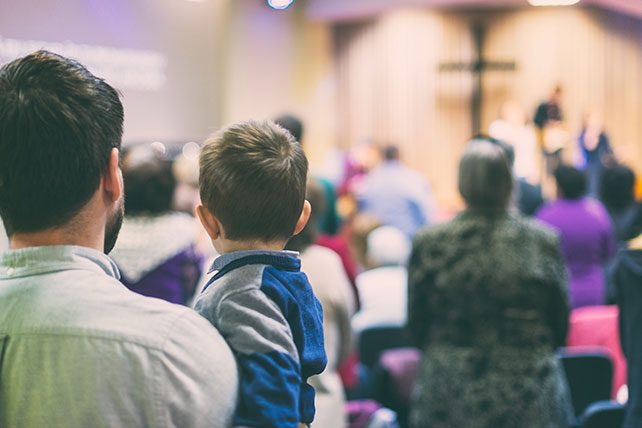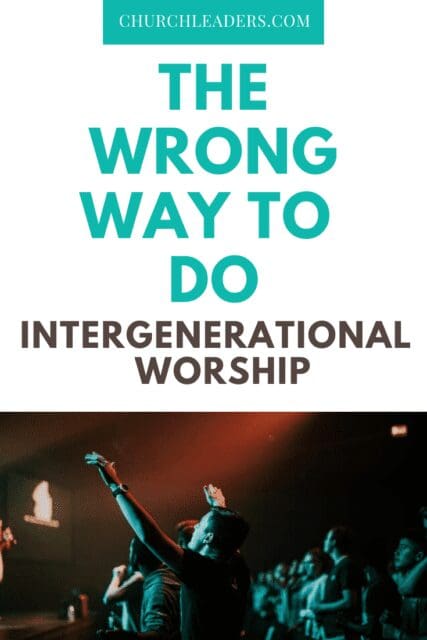It seems like whenever the topic of multigenerational or intergenerational worship gets brought up, a lot of concerns and assumptions start being expressed. Recently, someone directed some comments towards me that included many of those assumptions such as, “Intergenerational worship doesn’t meet the developmental needs of children and/or adults” and “Kids need to have their own space” and “We can’t dumb down the service just so kids can be there.”
Each of these concerns is fraught with a backdrop of suppositions and presumptions about what it could mean to have all ages gather for a time of intergenerational worship. And rather than address each of these individually, I thought I’d share some thoughts regarding what intergenerational worship is not and what intergenerational worship is.
Intergenerational Worship is NOT…
1. Putting kids in the sanctuary
If the goal was just to put children and youth in the sanctuary, then creating a new service geared to them and separate from the rest of the body would make sense. But that’s exactly the opposite of what intergenerational worship is. The whole point is to create space for all generations, old and young and in-between, to worship together.
Creating a new service or maintaining an existing service that targets one specific generation can’t accomplish this goal. It’s not just about putting seats in the seats; it’s about engaging the entire body of Christ in the work of the people (liturgy) or, in other words, the corporate community worshiping God together.
2. Glorified Kid’s Church
Some people express the concern that if children and youth are welcomed into the service, they’d have to start doing “kids stuff” like singing songs with motions and eating goldfish during the super-short, kid-appropriate sermon.
Intergenerational worship is not old people pretending to be kids or young people trying to act old. If that happened, it would be a total disservice to the whole point of intergenerational worship which has at its heart a desire to help kids and youth and adults and elderly be a part of the church as it is, whatever that looks like, and to experience all the parts of church that make it unique to their church tradition (such as liturgy, songs, Scripture reading, celebratory practices like baptism and communion, and all the other rhythms that make each worship service unique).


